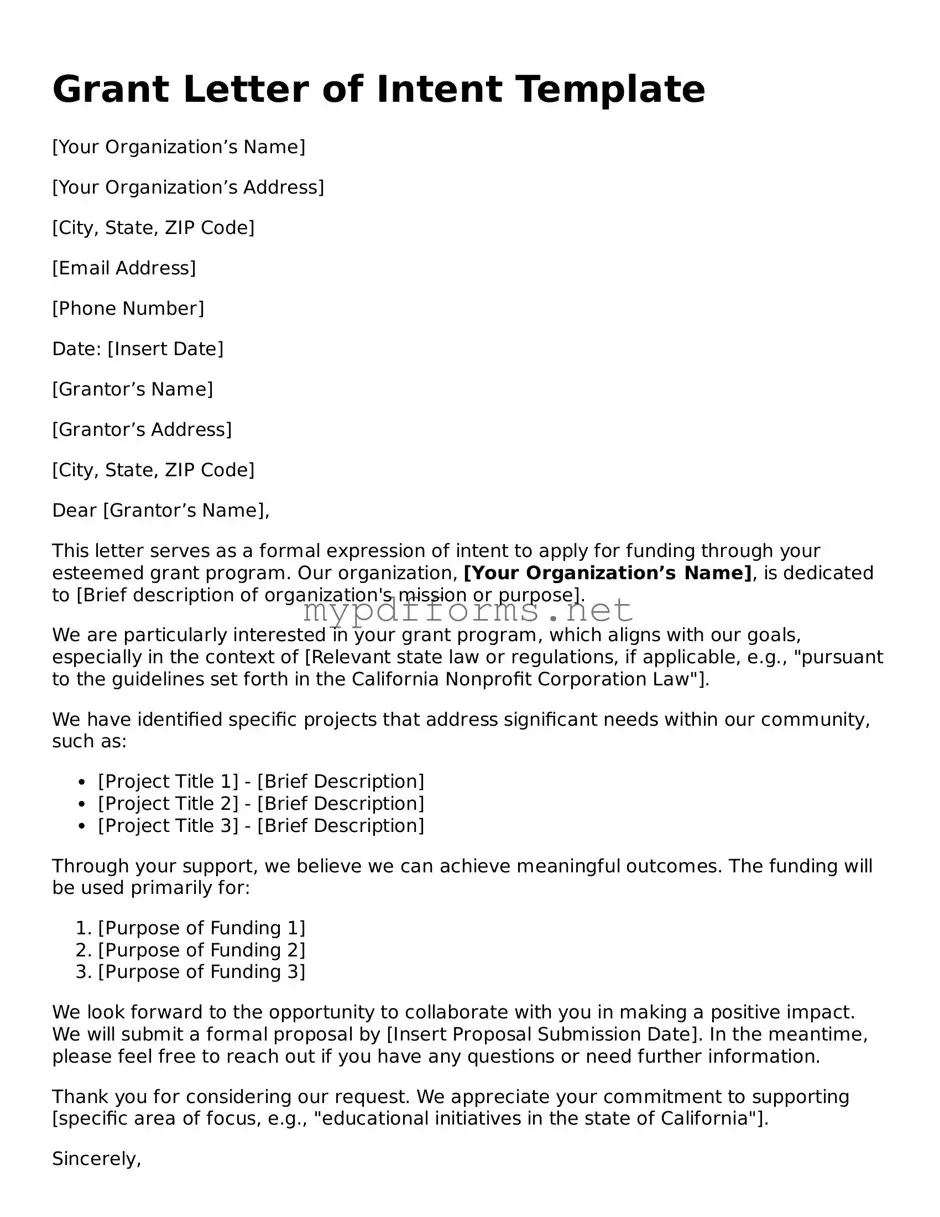The Grant Proposal is similar to the Grant Letter of Intent (LOI) in that both documents serve to outline a proposed project and its objectives. A Grant Proposal is typically more detailed, including specific budgetary needs, timelines, and measurable outcomes. While the LOI serves as an initial communication to gauge interest from funders, the Grant Proposal is a comprehensive request for funding that follows if the LOI is accepted.
The Concept Paper shares similarities with the Grant LOI in that both documents present an idea for funding consideration. A Concept Paper is generally shorter and less formal than a full proposal, focusing on the project's significance and feasibility. Like the LOI, it aims to attract the attention of potential funders, but it may not include as much detail about implementation or budgetary requirements.
The Letter of Inquiry (LOI) functions similarly to the Grant LOI by serving as an introductory communication to potential funders. Both documents are used to express interest in funding and to outline the key aspects of a project. However, a Letter of Inquiry may be more informal and is often used when a funder specifically requests such correspondence before submitting a full proposal.
The Funding Application is another document akin to the Grant LOI. Both require an overview of the project and its goals. However, a Funding Application is typically more detailed and formal, including specific questions that must be answered and often requiring supporting documentation. The Grant LOI serves as a preliminary step before this more extensive application process.
The Project Summary is comparable to the Grant LOI in that both provide a brief overview of a proposed project. The Project Summary is usually included as part of a larger proposal package, while the LOI stands alone as an initial communication. Both documents aim to summarize the project's purpose and significance in a concise manner.
The Executive Summary also shares a resemblance with the Grant LOI. Both documents are designed to give funders a quick snapshot of the project. The Executive Summary is often part of a larger proposal, summarizing key points like objectives, methods, and expected outcomes, whereas the LOI serves as an independent introduction to the project.
In the world of investments, clarity and intent are paramount, which is why an Investment Letter of Intent plays a crucial role in outlining the basic terms of a proposed deal. It serves as a stepping stone toward a more detailed contract, setting the stage for negotiations. For those interested in exploring this avenue further, you can review the Investment Letter to understand its importance and application in the investment landscape.
The Research Statement can be seen as similar to the Grant LOI, particularly in academic or scientific contexts. Both documents outline the purpose and significance of a research project. However, the Research Statement is often more focused on the research methodology and theoretical framework, while the LOI is broader, focusing on funding needs and project alignment with funder priorities.
The Pre-Application Form is another document that parallels the Grant LOI. Both serve as preliminary steps in the funding process, allowing applicants to outline their project ideas. The Pre-Application Form often includes specific questions or criteria set by the funder, while the LOI is generally more flexible in format and content, focusing on the project's essence.
